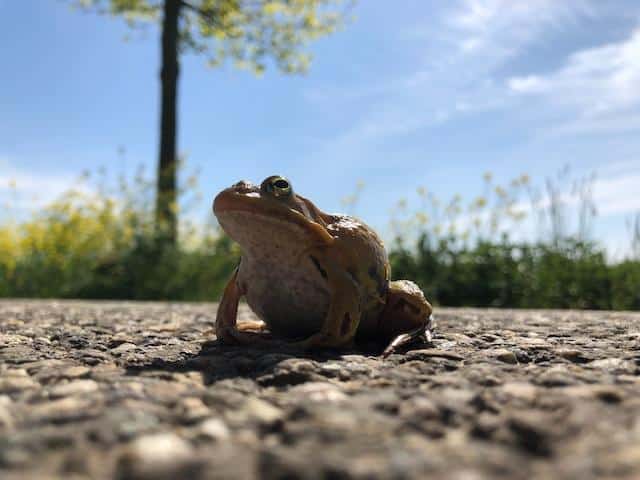Over the past 50 years, frog populations have been declining at unprecedented rates worldwide, with nearly one-third of the world’s 6,400+ amphibian species now threatened with extinction. Frogs are facing a deluge of environmental challenges, including infectious diseases (particularly a fatal skin disease caused by a chytrid fungus); habitat loss due to development and overuse of resources; introduction of invasive species; and over-harvesting by the pet and food trades.

Why do frogs matter?
The loss of frog populations can have real consequences. Frogs are an integral part of the food chain throughout their lifecycles: tadpoles eat algae; adult frogs prey on mosquitoes; both serve as prey for other predators. But perhaps more significantly, frogs — with their permeable skin and land/water habitats — are widely acknowledged bioindicators. They are the canaries in the “coal mine” that is our biosphere. Considering that frogs have existed in their approximate current forms for millions of years, the rapid loss of species now is a disturbing trend.
Can we save the frogs?
We’ll leave it to others to debate the extent to which human activities may be contributing to the loss of frog species. But there are simple things we can all do to help protect frogs, including:
- Don’t set a pet frog free: The introduction of a non-native frog species to your local ecosystem can upset the balance and introduce disease.
- Don’t stock non-native sport fish: Introduced fish species can over-consume frog populations.
- Be “green”: Reducing your ecological footprint helps to slow the drain of natural resources, in turn protecting natural frog habitats.
- Slow down for frogs: Roadkill really is a major cause of frog mortality!
For more information, visit: savethefrogs.com. April 28 is Save the Frogs Day!


